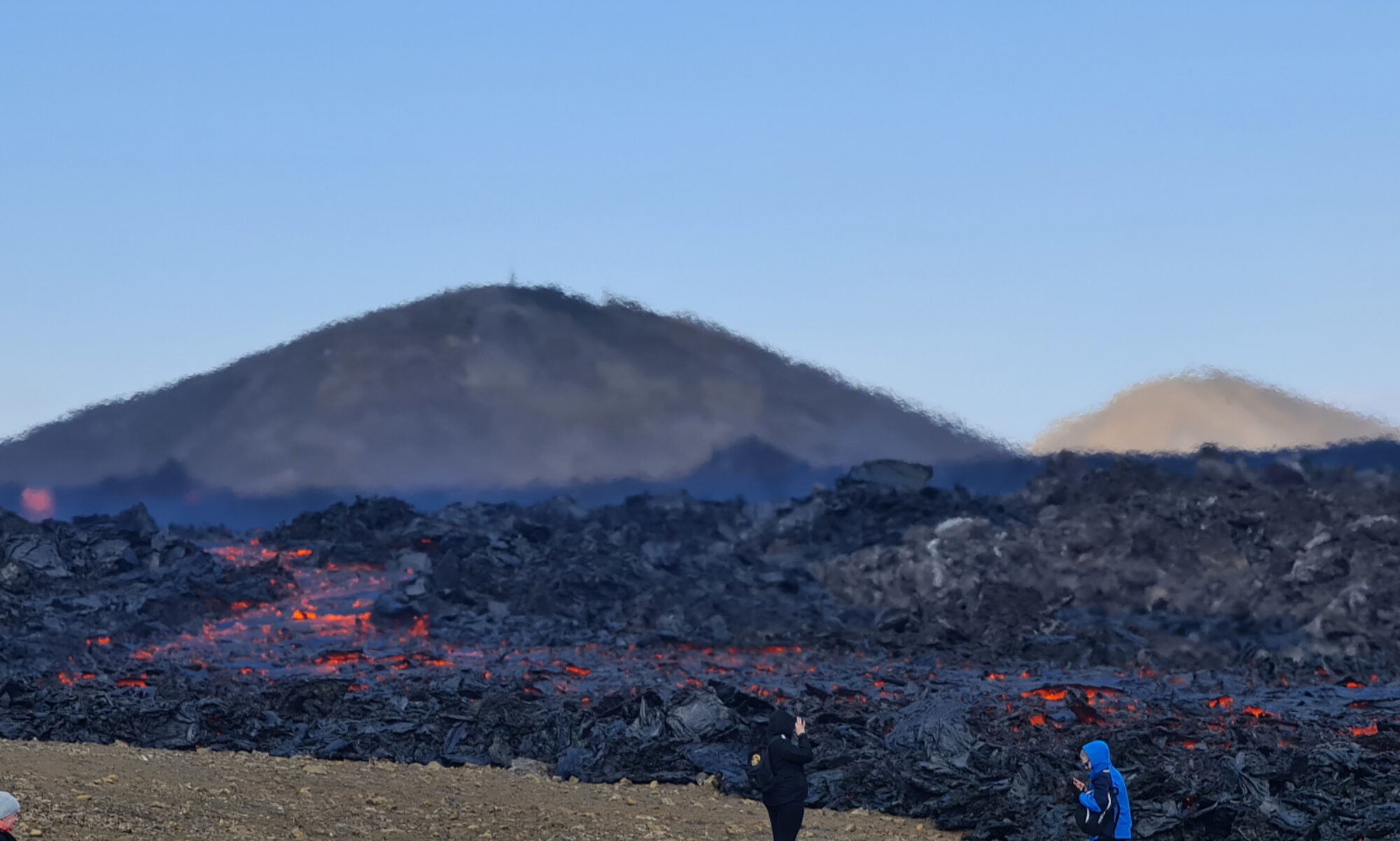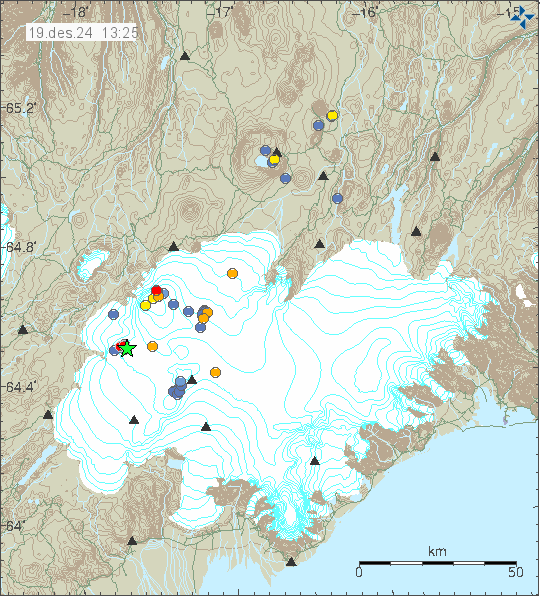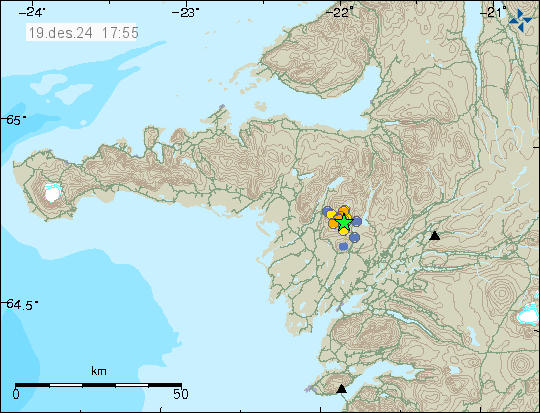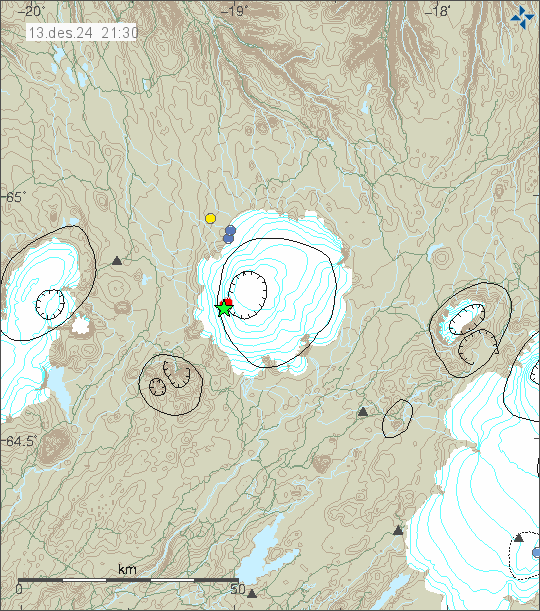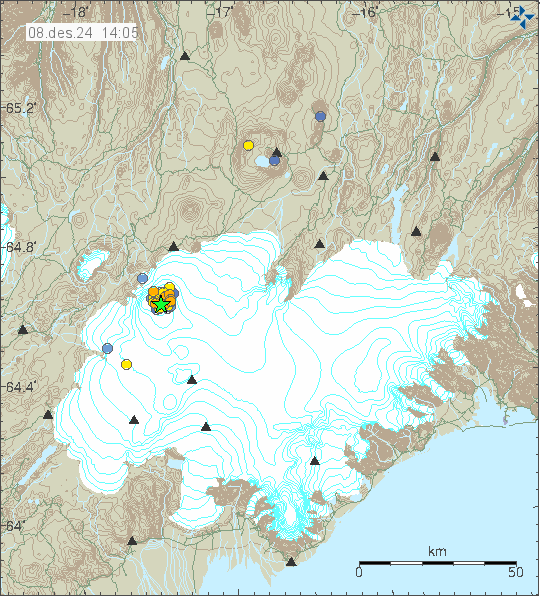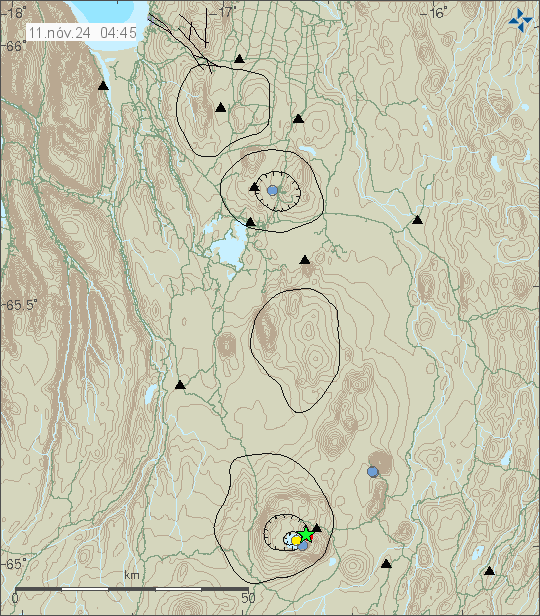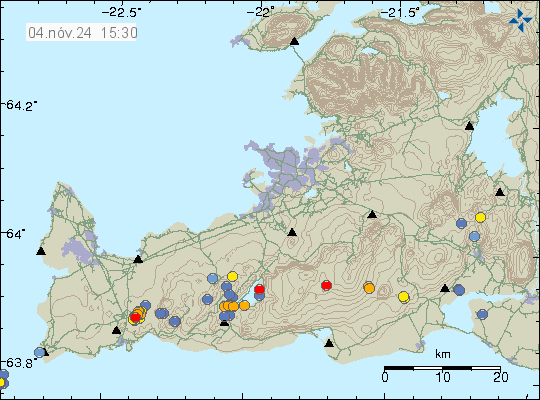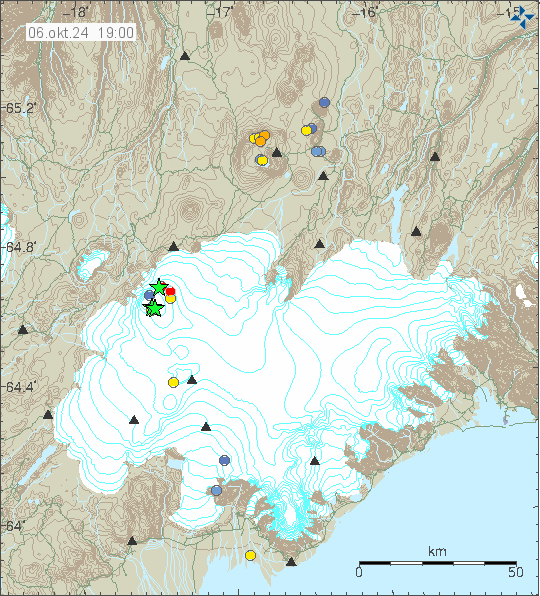On Sunday (29-December 2024) and yesterday (30-December 2024) an earthquake swarm took place in Reykjanes volcano, close to Eldey island. Largest earthquakes in this earthquake swarm had magnitude of Mw3,2 and Mw3,6. Over 200 earthquakes have been recorded at the writing of this article. This earthquake activity is possibly still ongoing. But this earthquake activity happens in waves with quiet time period between them.
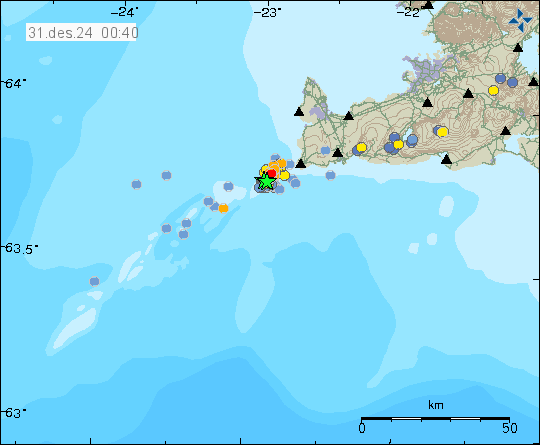
It is unclear if this earthquake activity is because of tectonic movement or magma activity. I do suspect that this activity is because of magma movement in this area, based on earthquakes location, since it was focused on rather small locations. There are however no signs that this earthquake swarm is a start of an eruption at this location currently. There are limited GPS data on Reykjanes volcano, since part of it is under the ocean.
